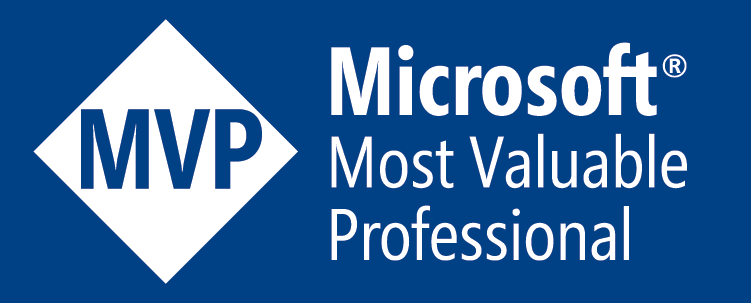Microsoft Agent Framework: Building the Next Generation of AI-Powered Agents

Introduction
Microsoft has taken another major step in its AI journey with the introduction of the Microsoft Agent Framework. Announced in October 2025, this open-source initiative provides a unified foundation for creating, running, and managing intelligent agents.
It combines the power of Azure AI, Microsoft Graph, and Copilot extensibility to enable developers to build agentic systems that are context-aware, secure, and enterprise-ready.
The framework is open-sourced on GitHub, making it accessible to developers and enterprises who want to create their own Copilots, workflow agents, or domain-specific AI solutions.
What is Microsoft Agent Framework?
The Microsoft Agent Framework is a software development framework that simplifies the creation of intelligent agents - software entities that can reason, act, and collaborate autonomously or in coordination with humans and other agents.
At its core, it provides:
- A runtime environment for executing agent logic
- A standardized API surface for communication and context exchange
- Integration with LLMs, memory stores, and tool connectors
- Alignment with the Model Context Protocol (MCP) for interoperability
Agents built using this framework can interact with users, call APIs, access enterprise data, and trigger automated actions - forming the foundation for Copilots and agentic ecosystems inside and outside Microsoft 365.
Key Components
| Component | Description |
|---|---|
| Agent Runtime | Execution environment for managing state, goals, and tool access of agents. |
| Agent SDK | Provides templates, connectors, and configuration tools for building agents. |
| Memory System | Enables persistent and episodic memory for agents, helping them retain context over time. |
| Tool Interface | Defines how agents call external APIs, databases, and enterprise systems like Graph or Dynamics. |
| Conversation Orchestrator | Manages dialogue flow and coordination among multiple agents. |
| Model Context Protocol (MCP) | Ensures interoperability and secure exchange between agents and external LLMs. |
How It Works – Example
Let’s consider an HR Assistant Agent built using the Agent Framework.
-
User query:
“Find all employees whose contracts are expiring this month and send reminders.” - Agent Framework actions:
- The Language Model interprets intent and context.
- The Agent Runtime identifies that this requires data retrieval and email sending.
- The agent uses connectors to:
- Query Microsoft Graph for employee data.
- Compose and send reminders using Outlook APIs.
- The Memory System records that reminders were sent and to whom.
- Response:
The agent reports back to the user with confirmation.
This flow demonstrates how the framework manages reasoning, action, and communication seamlessly.
Integrations and Ecosystem Alignment
The Agent Framework fits into Microsoft’s broader AI and Copilot ecosystem:
- Azure AI Foundry: Build, test, and deploy agents integrated with AI services, search, and vector stores.
- Semantic Kernel: Embed reasoning, planning, and skill execution logic using SK plugins.
- Microsoft 365 and Graph: Enable enterprise-aware agents that work securely with organizational data.
- Copilot Extensions: Extend Microsoft Copilot experiences (e.g., Teams, Outlook, or SharePoint) using custom agents built with this framework.
This ensures that the same agentic foundation powers Copilot, Declarative Agents, SharePoint Knowledge Agents, and third-party custom agents.
Example: Multi-Agent Collaboration
Imagine a company using three agents:
- Procurement Agent: Handles purchase approvals.
- Finance Agent: Monitors budgets.
- Compliance Agent: Checks policy adherence.
When a manager requests “Approve the laptop purchase request,”
- The Procurement Agent analyzes the request.
- It calls the Finance Agent to verify available budget.
- The Compliance Agent validates policy compliance.
- After all checks pass, the Procurement Agent executes the approval automatically.
This multi-agent orchestration demonstrates how complex, cross-departmental workflows can be handled without human intervention - with every step traceable and explainable.
Benefits
- Open Source and Extensible: Available on GitHub for developers to extend and contribute.
- Standardized Architecture: Promotes interoperability across Copilot, Semantic Kernel, and Azure AI.
- Enterprise-Ready Security: Inherits Microsoft’s compliance and authentication models.
- Faster Development: Reusable templates and connectors accelerate agent creation.
- Scalable Orchestration: Supports multi-agent environments and distributed workloads.
Getting Started
Clone the repository:
git clone https://github.com/microsoft/agent-framework
cd agent-framework
npm install
Create a new agent using a template:
npx agent create hr-assistant
Define the configuration (example YAML):
name: HR Assistant
description: Helps HR team manage employee records
tools:
- graph: employees.read
- outlook: mail.send
memory:
persistent: true
model: gpt-4o
Run the agent locally or deploy it to Azure:
npx agent run hr-assistant
Business Use Cases
| Industry | Example Use Case |
|---|---|
| Healthcare | Patient follow-up scheduling and insurance verification agents |
| Finance | Risk assessment and policy recommendation agents |
| Manufacturing | Maintenance scheduling and inventory prediction agents |
| Education | Student advisory or content generation agents |
| IT & Operations | Automated incident triage and documentation agents |
Summary
The Microsoft Agent Framework marks a major evolution in the AI ecosystem — moving from isolated chatbots to collaborative, context-aware agents. By combining the strengths of Azure AI, Semantic Kernel, and Copilot, Microsoft enables organizations to build secure, intelligent, and extensible agents that transform how work gets done.
This framework empowers every developer and enterprise to participate in the next generation of agentic computing — where intelligent systems reason, act, and learn alongside humans.
References
- GitHub Repository – Microsoft Agent Framework
- Microsoft Learn – Agent Framework Overview
- Official Announcement – Microsoft Blog
Disclaimer
Created with human expertise and GenAI support. This article has been enhanced and elaborated with the support of Generative AI.






Leave a comment